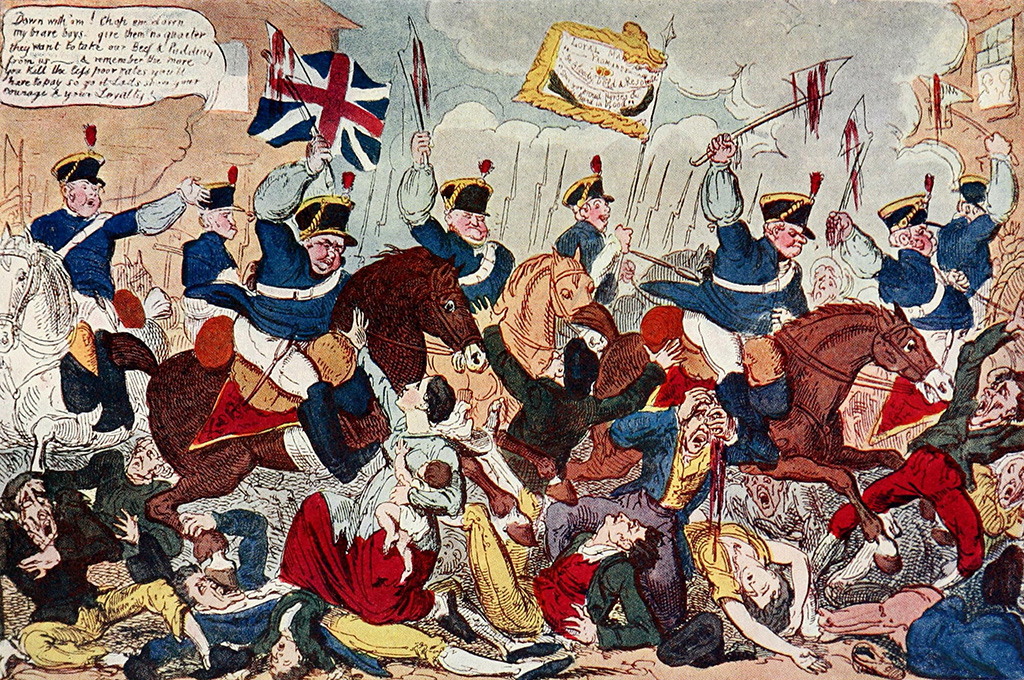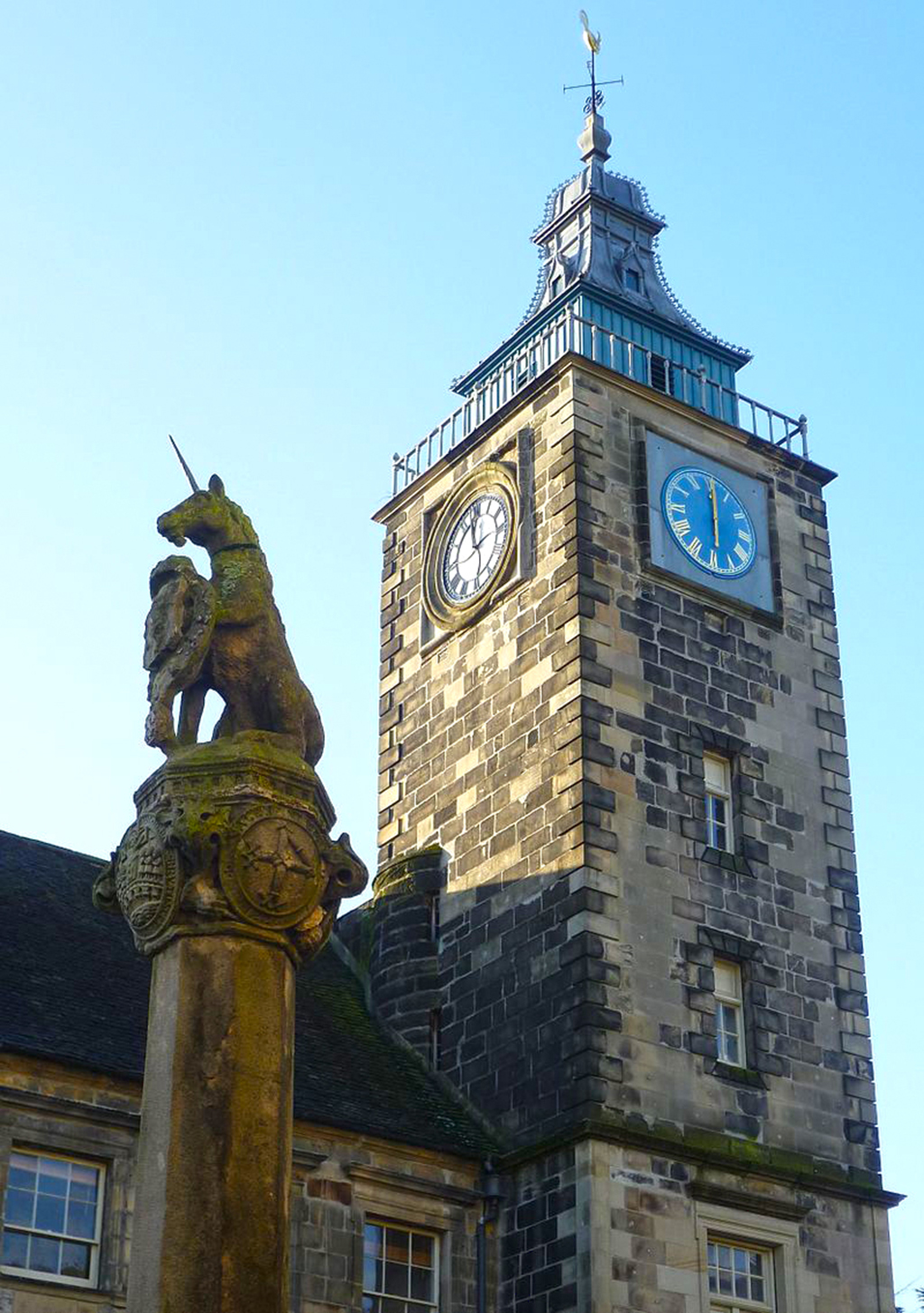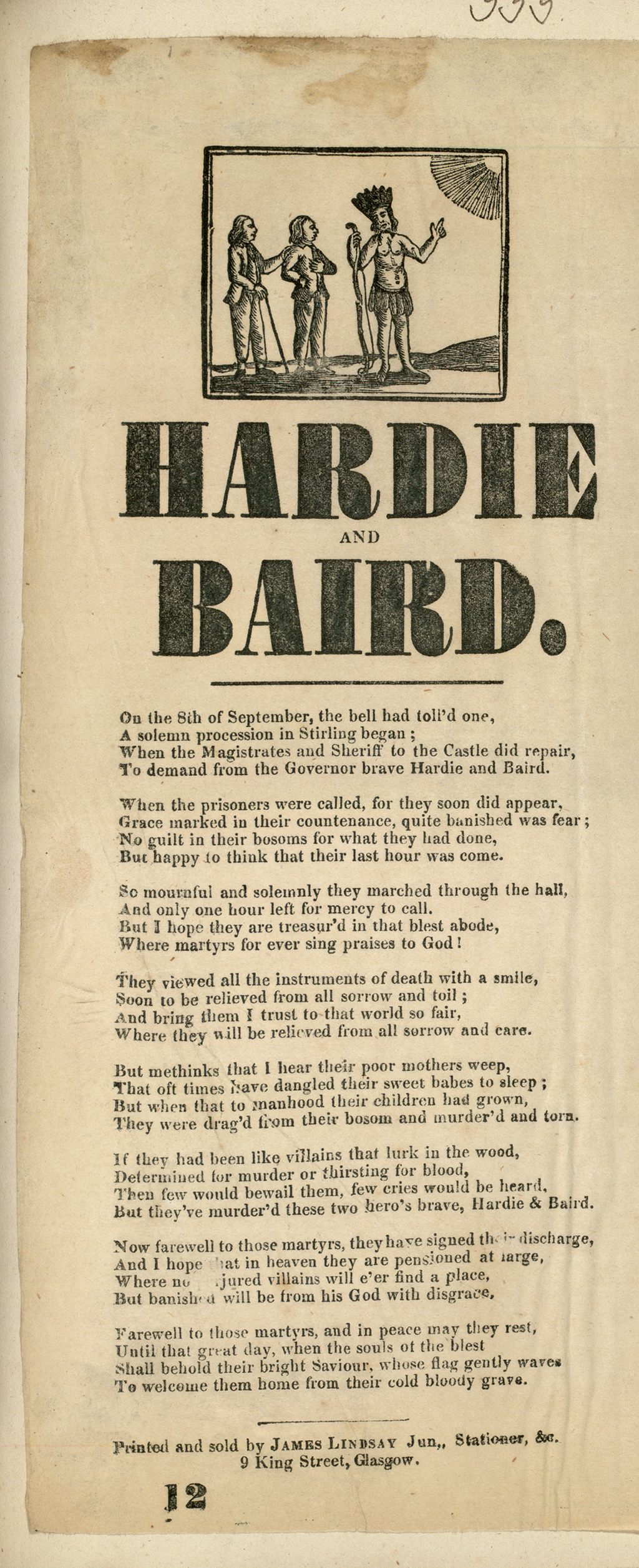The Scottish Radicals demanding a better deal in 1820 were brutally suppressed by government forces. But many of their ideals and aims are still part of the political debate today.
Most people never notice it, but attached to the bottom of Stirling Tolbooth is a small plaque. It is modest and unassuming but it commemorates one of the most extraordinary episodes in Scottish history.
The memorial mentions two men, John Baird and Andrew Hardie, who were executed in Stirling in 1820, their deaths marking the end of one of the most intriguing – yet surprisingly least known – periods of Scottish history: the Radical War.
It was a tale of betrayal and politics, of spies, armed insurrection and brutal suppression, and was a brief period of revolt that could have changed the country forever.
To understand what really happened, it is necessary to go back to the American and French revolutions several years before, which spread the notion of democracy around the continent. Indeed, shortly after the French Revolution, there had been riots in several Scottish cities.
Radical political clubs also sprang up, some of them secret, like the United Scotsmen. This was dedicated to the creation of a democratic republic, and its ideas caused a sensation. The authorities reacted as they had always done, with violence and suppression. It was only when troops returned home in their thousands after the end of the Napoleonic Wars in 1815 that the dynamic began to change. Many former soldiers quickly became disillusioned by the lack of work and poor conditions at home, and the growing sense of discontent fuelled the simmering radicalism, particuarly in urban and industrial Scotland.
If the conditions for insurrection had been brewing for a while, the catalyst for open revolt was the Peterloo Massacre in 1819, when troops and yeomanry charged unarmed protesters in Manchester.

The shocking events of the Peterloo Massacre, which took place in Manchester in 1819, fuelled the anger of the Scots radicals
Into this combustible situation stepped John Baird. Like many soldiers, Baird had returned from the war and become radicalised. He could read and write well and soaked up all the radical texts he could get. Living in Condorrat in east Dunbartonshire with his father and brothers in the weaving trade, he became a prominent member of the Condorrat Radicals, a group deman ding universal franchise, the repeal of the Act of Union and other political reforms.
Unfortunately for Baird and his fellow radicals, government spies had wormed their way into many of these new, and supposedly secret, societies. These spies reported back to James Mitchell, the Glasgow police chief, and in March 1820 Mitchell told Lord Sidmouth, the Home Secretary, that he believed the radicals were planning a general rising in Scotland.
On the advice of one of the government’s spies, Mitchell moved in and arrested the entire 28-man committee that represented the radical movement’s leadership in Gallowgate.
But that wasn’t enough. The authorities wanted to shut down the whole movement and, to do that, they had to help inspire a proper uprising and then crush it, brutally.
Mitchell wrote to Sidmouth again, recom mending that agents provocateurs incite a general rising, which could then be con fronted and defeated. The ‘Proclamation of the Provisional Government’ was then duly issued by the radicals, at least partly on the coaxing of the spies.
The proclamation purported to come from the organisation which would form a new, radical government, and it was posted in public places in Glasgow and across west and central Scotland. It called on all ‘to desist from their labour on and after this day, the first of April, and attend wholly to the recovery of their rights’ – it was basically a call for a general strike.

Stirling Tolbooth, where the memorial to Baird and Hardie can be found
About 60,000 Scottish workers downed tools and went out on strike in response to the proclamation. But that wasn’t enough. Goaded on by fellow radicals and some government spies, about 40 radical militants headed for the Carron Ironworks near Falkirk in an attempt to get weapons. It was the largest single ironworks in Europe and the factory that provided most of the artillery pieces for the army and navy.
The militants had been assured that a larger party of radicals were on their way, but no support arrived. So early on the morning of 5 April 1820, Andrew Hardie joined Baird with 25 men he had brought from Glasgow and the combined, yet hardly big, force set off for the Glasgow-to-Edinburgh canal.
While Baird and his men were resting on a hill near Bonnybridge at a place called Bonnymuir, a detachment of troops from the 10th Hussars and the Stirlingshire Yeomanry attacked with a sabre charge. Baird quickly realised that this was a fi ght they could not win. The radicals surrendered – but there are reports that some of them were butchered by the yeomanry despite this. The survivors were taken to Stirling Castle.
There were further arrests after a party of armed radicals marched out from Strathaven and were captured, and yet another encounter when a crowd tried to rescue a group of radicals being led to Greenock jail, but all were defeated and easily crushed by the troops.
In the end, the insurrection was over inside a week. A total of 88 radicals had been arrested and charged with high treason. The trials started in July. Baird, as the ringleader, was convicted of two charges of high treason. He was sentenced to death, along with Hardie and James Wilson. The latter, a 63-year-old weaver from Strathaven, was executed on 30 August.

A poem commemorating the deaths: ‘farewell to those martyrs’
Some twenty others were sent to penal colonies. As the instigators, Baird and Hardie had to be made an example of, so on 8 September 1820, the two men were led to a public execution platform at Stirling Castle in front of a crowd of several thousand.
Baird told the crowd: ‘What I have hitherto done, and which brought me here, was for the cause of truth and justice.’ The crowd cheered and, fearing a riot, Sheriff Ranald MacDonald of Staffa stopped any further speeches and hanged the two men as quickly as he could. After their bodies were cut down, their heads were severed and held up to the crowd with the cry: ‘Behold, the head of a traitor.’
There was an aftermath, though. When the full details of the involvement of spies emerged a few years later, the Whig Government of 1835 succumbed to pressure and asked King William IV to pardon all those who had been convicted. But that move came too late for Baird and Hardie, whose bodies were eventually exhumed from Stirling Castle and given proper burials in Glasgow in 1847.
The plaque to their memory was erected on May Day 1966 by the Stirling Labour Party and reads: ‘In memory of John Baird and Andrew Hardie who were publicly hanged here on 8 September 1820. “For the cause of justice and truth”.’
TAGS

